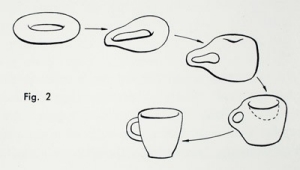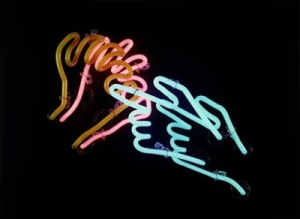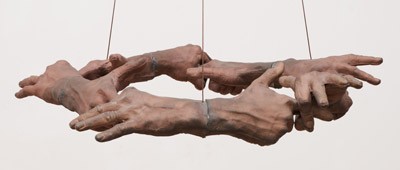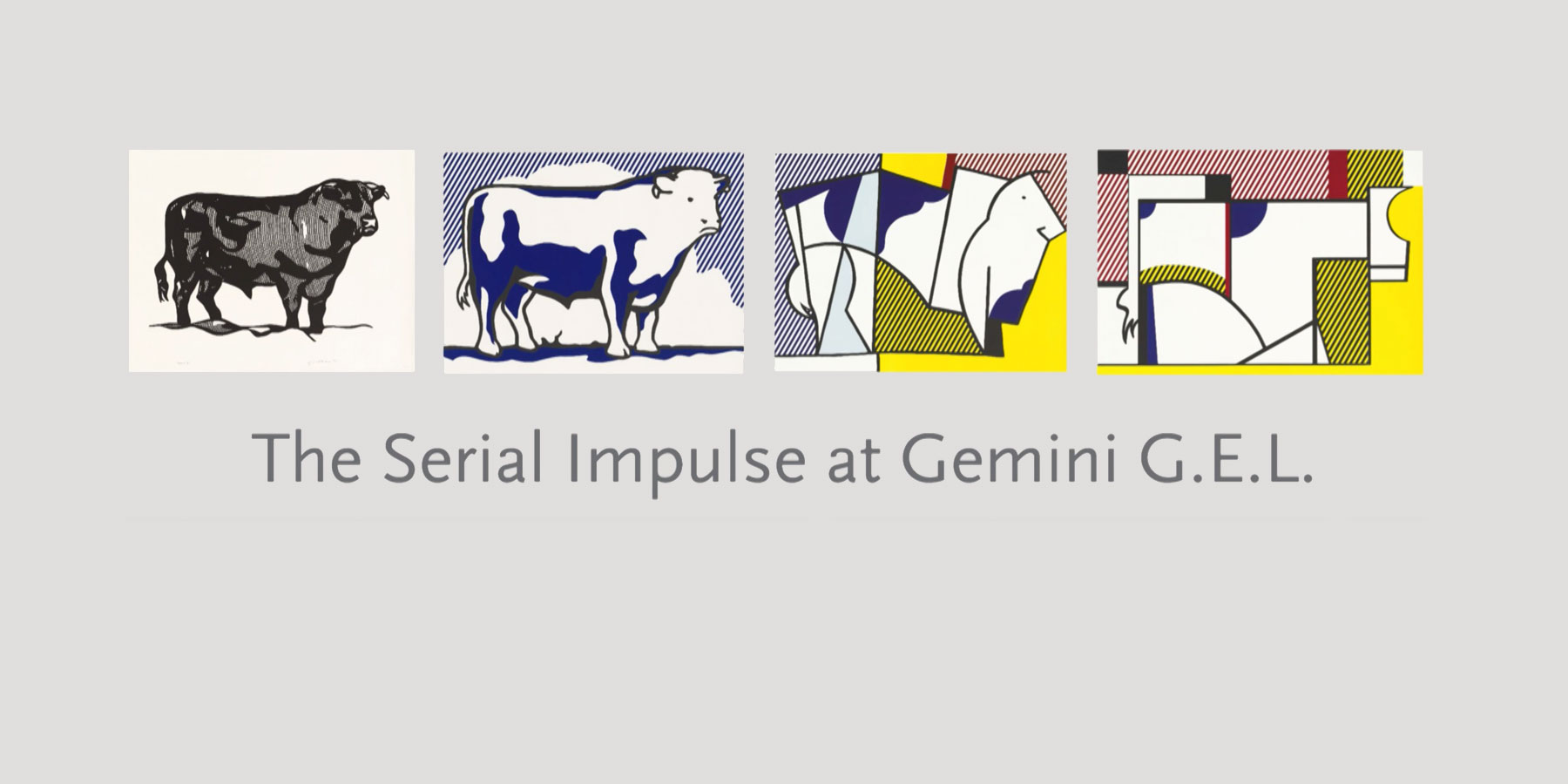Fingers and Holes began when Bruce Nauman (American, born 1941) challenged himself to draw his right hand with his left and his left hand with his right. He then annotated each drawing with the number of holes formed between fingers. In doing so, Nauman translated his anatomical sketches into the language of algebraic topology, which he had studied in college. Topologists investigate constant properties, such as solids and voids, of objects subjected to distortion. In this mathematical field, a coffee cup and doughnut are equivalents: each has an unbroken surface surrounding a single “hole.” Topologists call these homeomorphisms, or, as Nauman explains, “things that don’t look alike that morphose into the other.”
Bruce Nauman, Fingers and Holes, 1994

Topological equivalence of a doughnut and a coffee cup. From Stephen Barr, Experiments in Topology (New York, 1964)
“The series was not about the holes at first and then I saw that that was going on. So I started thinking about that—about topology. Things that don’t look alike morphose one into another.”—Nauman, 1994

Bruce Nauman, Human Sexual Experience, 1985, neon tubing mounted on aluminum monolith, Marc and Livia Straus Family Collection, Courtesy Sperone Westwater, New York
Fingers and Holes is about transformation: topological, visual, and linguistic. Topology’s “three fingers, one hole” is a symbol of sexual intercourse in what Nauman has called “kids’ sign language, innocent, funny, simple.” The gesture appears in two other prints: in daisy chain formation and pasted over a handshake between two clowns (Nauman’s identification). Elsewhere, pumping handshakes are conflated with penises that “pump up and down” from flaccid to erect. Nauman’s startling equivalences coax slippery meanings—puerile, but logical—from an ostensibly simple and august subject: the artist’s hand.
Nauman has long been fascinated by the myriad possibilities presented by hands—specifically his own hands—and he has explored the subject in many permutations and mediums. The “three fingers, one hole” gesture in this series first appeared in Human Sexual Experience, a neon work from 1985.

Bruce Nauman, Untitled (Hand Circle), 1996, bronze, silver solder, and copper, ARTIST ROOMS National Galleries of Scotland and Tate. Acquired jointly through The d'Offay Donation with assistance from the National Heritage Memorial Fund and the Art Fund 2008
That same year, Nauman visited Gemini G.E.L. and began work on images of clowns shaking hands. He created lithographic plates, but did not complete work on the project. Nauman next returned to Gemini in 1994, and while tackling the challenge of ambidextrous drawing, he perceived an analogous relationship between the “three fingers, one hole” gesture and the earlier image of clowns shaking hands. He returned to the plates he had begun in 1985 and incorporated them into the Fingers and Holes series.
Both subjects conflate hand gestures and sexual activity: intercourse, in the case of “three fingers, one hole,” and phallic erections and detumescence in the case of the clowns’ pumping handshake. The double handshakes read as both obsequious and aggressive, a reading that jibes with Nauman’s appreciation of clowns as “funny or threatening—their position or function is ambiguous, and I like that.” The multiple meanings of Nauman’s clowns and their gestures extend the series’s exploration of homeomorphisms. To make the analogous relationship between his hands and the clowns’ hands clear, Nauman superimposed the “three fingers, one hole” motif over the handshake in one of the three clown prints.














